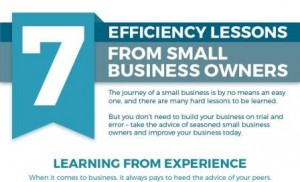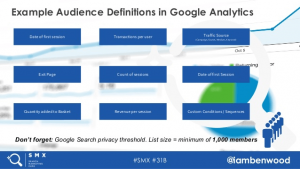Avoid the legal and ethical dangers of stock content misuse. Explore these cautionary tales and best practices for managing stock assets in your DAM.

As marketers who rely on creative collaborators to produce amazing adverts, timely text and vibrant visuals, we all use stock content. A good stock photo can capture your brand’s message, reducing the need for lengthy descriptions and allowing space for prominent “Buy now” buttons, especially when lead generation pressure is high. The content you license is created by people who have spent years honing their craft to build portfolios to catch your eyes.
Stock content is a natural part of the day-to-day maintenance of a digital asset management (DAM) system. But the photographers, videographers and effects makers who have helped build large commercial stock libraries can find their assets being used in ways that violate their publishing agreements and lose them serious income — and might end up in your DAM without proper attribution. When the need to re-use a licensed asset meets a creator’s need to be fairly paid, expensive problems might arise. That’s scary.
Here are three “what if” stories about stock content and your DAM — and some considerations about how to prevent them from happening to you.
1. Stock photo surprises: Managing image rights
What if you re-used a stock image of a married couple on a website landing page and one member of the couple landed on the page and became enraged? (Hey, that rhymes!) Just imagine: a freelance wedding photographer asks couples if he can use one of their images in his stock portfolio. He obtains their permission for lifetime use and sells rights to one or more stock companies, who license the photo for single-use, limited-use or unlimited-use downloads to individuals and organizations, depending upon their licensing package.
But what if, in one case, a pictured couple divorced — and it was a drawn-out, messy, Netflix true-crime documentary-worthy divorce with horrible feelings on both sides? If the former husband sees his wedding photo on a site where he wants to have his new wedding, saying, “We’re sorry,” isn’t going to be enough.
However, this situation can be avoided because the metadata in the photo should contain at least a few metadata elements that identify either the stock publisher or the photographer. You can use them to track down the photo’s origin. If you have a limited-use license and have only used the image two or three times in the history of your company with URIs tracked in your DAM, your legal team will, hopefully, sigh in relief.
2. Expired licenses: Avoiding misuse of time-limited stock content
Your enterprise is opening a new country-and-western-themed restaurant in a state where they succeeded in the past. After securing the location and beginning architectural work, your brand team collaborates with an outside agency to develop the restaurant’s brand, including logos, images and asset templates.
The agency purchases stock photography for your organization and the license allows you to re-use the image within a year of purchase to create launch assets. After that, your company usually employs a photographer to take glamour shots of your delicious food, craft beer, cocktails and interiors, which you will use under an exclusive license.
A year goes by and the restaurant is successful, some of those assets are re-used in a social media campaign by a new team member who isn’t aware of the agreement. The images no longer match the restaurant’s brand or location. What if a customer comes to the restaurant and complains that his photo opportunity — a buck’s head on the wall — is not there? Oops.
When you import stock photography into your DAM, you should also import a copy of the license agreement specific to the photo portfolio, package or stock publisher. This can be as simple as a copy of the general licensing terms available on the company’s website for your license type if you can’t get the actual signed and dated license agreement.
However, you should get an official copy of the document. The document can be linked (or related) to each image purchased and an agreement end date can be added. A workflow can be created to ensure that assets with expired end dates are unavailable to search and archived for reference only.
3. Product lifecycle management: Handling seasonal and discontinued item images
Marketers have a unique stock imagery issue because they have to manage hundreds of thousands of images licensed to them by vendors of products they sell and/or produced by them. One product may have many additional images, like clothing with multiple views so a potential buyer can see how the piece fits or food products where sellers must show nutrition labels and other product information like allergens. The stock can, as they say, stock up.
Usually, stock photography images can be deleted from the DAM when the product is no longer sold or available. When the product is used in marketing assets, such as a for-sale poster, a menu, property signage or assets promoting events and offers, like postcards, emails or landing pages, the stock image itself is not used on its own.
It is unlikely an image of a cookie or the new summer cocktails on a bar will be used without marketing text, logos or other effects applied. There would not be a danger if you went out for happy hour to order a cocktail shown on social media that is not available at your favorite bar.
Product images in your DAM should be properly named and tagged with vendor/source, campaign dates and license end dates. For products that are used on a schedule(e.g., the cocktail or wine of the month, the ready-to-wear work collection that comes around every fall or any other rotating promotion), it may make sense to keep them in a special collection accessible by your creatives so they can be easily re-used. A metadata element checkbox that marks the asset as available/unavailable for re-use might also be a good idea.
Mind your metadata
Fast and loose licensing arrangements or poor management of accounts and users can create intellectual property issues that will give you — and your legal team — heartburn of Pompeian proportions. By adding licensing and usage information to your digital assets, your DAM will enable your organization to safely reuse content.
The post 3 ways to avoid stock content misuse in your DAM appeared first on MarTech.
(9)
Report Post




